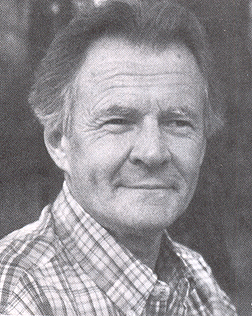By Michael Sellon
Originally printed in the NOVEMBER-DECEMBER 2007 issue of Quest magazine.
Citation: Sellon, Michael. "The Sellon Legacy." Quest 95.6 (NOVEMBER-DECEMBER 2007): 222-225.

This is an abbreviated account of the lives of two dedicated theosophists; John A. Sellon and Emily Boenke Sellon. Although they both have passed on to new lives, their devotions still reverberate in various theosophical enterprises today.
Theosophy, and the international Society which furthers its universalistic vision, rushed into the lives of John Sellon's parents back in the 1920s. Barbara and Ernest Sellon quickly realized the insightful scope and social commitments of the Society, and in decisive pace joined its area center in New York City. This turning point soon drew their son into the dynamics of merging three separate lodges into one integrated center of learning and service.
These events created a fresh magnetism for the theosophical community, one that destined Emily Boenke to join this effort as well as meet her future husband. Barbara, impressed by Emily's bright searching nature, led her to explore the worldview of Theosophy. Emily took to the literature with an insatiable thirst. In later years, she recalled those times as one continuous stream of "Aha's!" in which a deep intuitive knowing converged—sometimes colliding—with these readings termed "Ancient Wisdom." This vital coalescence with the Sellons and Theosophy created a life work for John and Emily which persisted for the rest of their lives (sixty to seventy years).
The elder Sellons favored a lively social life, and in due time they were hosting visits from a number of lecturers key to the international endeavors of the Theosophical Society. One of those luminaries was J. Krishnamurti, to whom John took a special liking. Years later he would proudly proclaim—with tongue in cheek—that he "taught" Krishnaji fundamental strategies of esoteric ping-pong.
On a more serious side, those very same times were challenged by the onset of the Great Depression, a tragic event that imposed itself upon everyone. Indeed dire economic limitations prevailed, yet paradoxically stimulated and invoked communities to stand strong and right wrongs. This changed many lives, including those of two remarkable Theosophists, Dora and Fitz Kunz. Ernest and Barbara, along with the New York Theosophical Society, were instrumental in the Kunzes' relocation to New York. This became a deeply spiritual merger that brought the Kunzes and Sellons together in a lifetime of theosophical endeavor.
Together, joined by many members, they spearheaded a vibrant learning process for the New York Theosophical Society. In 1937, they created Pumpkin Hollow Farm as a regional summer camp in order to bring Theosophy into nature and create a special sense of community. The Northeast Federation of Theosophists was appropriately founded to enlarge this sense of community.
Of very special theosophical interest was the creation of the Foundation for Integrative Education and its scholarly edition Main Currents in Modern Thought of which Emily became co-editor and John its financial advisor. Although the new foundation lay outside the workings of the Theosophical Society, its inner life was purely Theosophical in nature, ever seeking out authors and contemporary thought that revealed main currents in science and humanities that clearly had theosophical intent. For Emily, John, and the Kunzes, the epicenter of this quest was to share new insights of the timeless, universal ground of being; the classic oneness of the cosmos that they perceived as coursing throughout modern twentieth century cultural ferment. Fritz had a very special interest in modern science, which he envisioned would play a key role in fresh revelations of universality and integrative principles. In Main Currents' retrospective issue published in November 1975, Emily wrote: "All true knowledge arises from the integration of two domains of knowing—the perceptual, aesthetic, experimental and the abstract theoretical or conceptual. Both these modes must be nurtured if we are to achieve personal integration and wholeness; both are essential for the growth and renewal of our culture." These words still ring true today.
The Sellons and Kunzes had an unwavering conviction that modern thought, i.e., physics, biology, etc. along with an integrative revolution in the humanities, would in some vital way impel Theosophy into a new alliance with frontline changes in world culture.
To this end, Emily and John Sellon wove their lives serving Theosophy. The Theosophical Society, the NYTS, Pumpkin Hollow, the Northeast Theosophical Federation, the Foundation for Integrative Education, Main Currents, national lecturing and national leadership positions created a very full life. John became a founding member of the Theosophical Investment Trust and later, he established a Charitable Trust which continues today, supporting, in part, various Theosophical centers of learning and service.
Their legacies are remarkable, but the one they deemed most crucial is simply Oneness, a unity permeating the entire panoply of existence.

